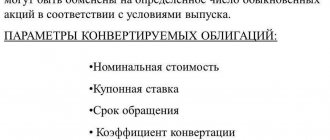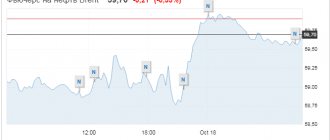Hello, dear blog guests, today we will talk about emission and non-equity securities, as this information may be useful to those of our compatriots who are planning to try their hand at being an investor.
First of all, it should be mentioned that studying the features of the stock market is quite an interesting and exciting activity. In addition, after familiarizing yourself with the basic laws of the securities market, you can try yourself as an investor and, with a certain amount of luck, ensure that you receive passive income. If you are a novice investor and are just getting acquainted with the modern stock market, then it will be useful for you to know that all existing securities can be divided into two main types: non-equity and emission. We will talk about the differences between the mentioned types of securities further.
Concept of securities
A security (CS) is a document certifying the rights of its owner, both property and non-property. When creating it, the established form and procedure for submitting details must be observed.
This concept is defined by the legislation of the Russian Federation.
This category of documents is characterized by the following properties:
- negotiability;
- recognition by the state;
- liquidity;
- risk;
- profitability;
- mandatory performance.
More information about equity securities
A security is a kind of certificate that indicates the right of the holder of such a security to any property, the transfer (sale) of which can only occur upon presentation of the document. An example of this is a stock. It refers to issue-grade securities and provides its owner with the right to receive a fixed percentage of the profit subsequently performing the activities of the organization and its assets (if the organization is liquidated). The person who acquires the securities is called the investor, and the issuing entity is called the issuer.
Signs that correctly identify ECB are:
- same volume;
- deadlines for exercising rights (which do not depend on the time of purchase of such certificates);
- certifying a set of rights;
- issued by issues;
- they can be issued (issued), sold (purchased), redeemed (cancelled);
- they can be converted into money, they generate income, have a certain exchange rate, and are reliable.
Release rules and penalties
The procedure for issuing options is similar to the process of issuing any security of a joint-stock company, converted into shares and placed through subscription.
Regulations governing the issuance of option contracts:
- the procedure is possible with paid authorized capital of the company;
- the number of options does not exceed the volume of free shares;
- the number of securities planned for sale during the exchange of distributed contracts does not exceed 5% of the volume of the authorized capital of the joint-stock company;
- The owner of the option has the right not to convert the agreement into shares.
An enterprise cannot force an employee to act on contracts through various means and methods. Option agreements are void in certain cases. The losses of the owners in this situation are reimbursed by the company.
Violation of the rules leads to penalties for the issuer. In Russia, abuses during the issue of shares are subject to criminal liability.
Emission Central Bank
Issue-grade securities include shares, bonds, options, and depositary receipts. All of them serve as tools for making a profit by investing capital.
Promotion
A share is a document confirming its owner's right to a share in the business.
This is achieved through 2 aspects:
- receiving part of the profit of the joint-stock company in the form of dividends;
- participation in the management of the enterprise by voting at the meeting of shareholders;
- receiving a part of the property proportional to the number of securities held in the event of liquidation of the company.
According to the classification, this investment asset is classified as registered and undocumented. It does not provide for any restrictions on tenure. By decision of the issuer, preferred shares may be issued in addition to standard shares.
Their differences boil down to the fact that they:
- ensure receipt of increased dividends;
- do not provide for the opportunity to participate in shareholder voting.
However, shareholders should be aware that despite the purported rights, the issuer may refuse to pay dividends based on poor economic performance. The amount of remuneration for the holder of such an asset is not regulated. In addition, in the event of a company's bankruptcy, priority in the division of property is given to persons who held its bonds.
Bond
A bond is a debt security classified as valuable.
It is characterized by such parameters as:
- denomination;
- maturity date;
- presence or absence of an offer;
- profitability.
Based on them, they are classified according to the duration of circulation into short-term and long-term. It is impossible to issue a bond whose validity is not limited in time.
In addition, this type of investment assets is divided into:
- for coupons, that is, bringing profit to its owner in the form of regular payments;
- for bonds with a discount at which no coupons are transferred, and their yield is reduced to the difference between the price at which the investor purchased it and the par value at which redemption is made.
The first type of such paper, in turn, is divided into types that provide fixed, variable or constant income. Such investment assets can be issued either by the Ministry of Finance of the Russian Federation or its constituent entities, or by private companies.
The status of the issuer affects not only the reliability of the profit-making instrument, but also the taxation procedure for coupons received through it.
Option
An option is the right to buy or sell a particular commodity at a fixed price.
When trading this investment instrument, the object of transfer is not the material product, but the right to preferential purchase or sale of it. An issuer's option is the right to purchase shares of this issuer at a fixed price, assigned to its owner. Those. this is a registered asset.
At the same time, affiliation with the Central Bank is fully established only for the issuer's option. The question of the relationship to them of all other types of options, for example, currency or commodity options, remains open. This is due to the peculiarities of Russian legislation: the Civil Code of the Russian Federation does not limit their types to the list given in it.
A person purchasing an issuer option expects the value of his underlying asset to increase over time. The holder of this security will benefit from retaining the right
buy shares
for a pre-agreed amount.
Russian depositary receipt
The Russian Depositary Receipt (RDR) has no fixed value and no expiration date. Its meaning is to secure the holder’s right to demand a specified number of shares or bonds of the issuer.
RDRs are issued by large investment companies that are accredited on global platforms. Being the owners of a large number of foreign investment instruments, they, in turn, issue assets that can be transferred into the possession of persons living in the Russian Federation.
The use of this investment instrument allows citizens of the Russian Federation to become owners of foreign assets without taking into account the requirements of the law on the export of capital.
Advantages and Disadvantages of Owning an Uncertificated Share
The stock exchange is a source of receipt and distribution of finance. Uncertificated shares are traded here, the purchase of which accelerates the growth of companies.
In terms of release and circulation, they are very convenient:
- freely traded on the stock exchange;
- they are easy to transfer from account to account;
- they are durable and safe to store;
- do not require large production costs.
The disadvantage of this type of stock is that you cannot touch it. Therefore, they are still treated with prejudice.
There is debate among domestic lawyers about the legal regime of uncertificated shares. Some of them believe that the fixation of rights is conditional and therefore cannot be considered traditional securities.
Various characteristics of issuing securities
| By form of ownership | Personalized bearer |
| According to the form of existence | Documentary Undocumented |
| By duration of existence | Unlimited Urgent |
| By stage of appeal | Primary Secondary |
| By type of income | Constant Interest |
Personalized and bearer
Registered securities are securities, data on the owners of which is available to the issuer in the form of a register of securities owners. The transfer of rights and their implementation require mandatory identification of the holder. Registered securities are usually issued in non-documentary form.
Bearer securities are securities, the transfer and implementation of assigned rights do not require identification of the holder.
Documentary and non-documentary forms
The forms of issuing securities come in the following execution methods (forms of issue):
- documentary – the holder’s data is indicated in the certificate;
- uncertificated (for example, a share) - the owner’s details are indicated in the records of the DEPO account. This form involves securing rights not on paper (document), but using electronic computer technology.
All central banks differ in the way they transfer rights to them. Bearer securities are immediately valid upon delivery. The entity issuing the securities is liable only if it provides the holder with a false document. The transfer of rights with a registered uncertificated securities takes place from the time the data on the personal (DEPO) account of the new holder is entered. With a documentary securities – transfer of rights at the time of transfer of the certificate. According to order securities, the transfer of rights occurs through an endorsement and signature of the endorser.
By type of income
All issuing securities provide for the owners of these securities to receive constant (interest) income. Owners of common shares have a profit depending on the level of income of the organization for the reporting period. Holders of preferred securities have profits all the time, but of a fixed amount.
By terms of application
Emission securities can be in circulation from one year to thirty years. In essence, perpetual securities are limited by the period of activity of the issuer (the concept of issuer means issuing, entities having the right to issue).
By stages of circulation
According to the stages of circulation, securities are divided into primary issue and secondary. The sale (alienation) of issued securities can be carried out according to established rules through the stock market (at auction) and on a contractual basis. Almost all securities, excluding shares, are not traded on a stock exchange. Public trading (direct discussion of prices between seller and buyer in person) is very rare; the majority of transactions are carried out through online trading platforms.
The securities market is also divided into cash – “spot” and futures. In a cash market, contract agreements are executed within a period of 1 to 3 days. If urgent, agreements can last for several weeks (months). In the stock market (capital market), shares and long-term bonds can be traded for more than one year. To quickly raise funds, checks, bills and bank certificates are used.
Video on the topic:
Carrying out state registration
All types of securities must undergo state registration upon issue. When passing it, the following is stated:
Russian legislation establishes the deadlines within which the issuer is obliged to submit papers for registration. Usually they are 3 months from the date of approval of the decision to issue. The period may be limited to a month in the following cases:
At the legislative level, the documents required to be prepared for state registration are established, and the grounds that may serve for refusal are also determined. After submitting them to the registration authority, it has 30 days to complete the registration or make an informed decision to refuse state registration. A negative decision may be made if the issuer violated the legal requirements regarding the issue of securities, generated an incomplete package of documents for state registration, reported false information about himself, and also failed to pay taxes associated with the issue.
By preparing well in advance for the issue of securities, the company significantly increases the chances of their successful state registration. This will allow you to attract the necessary amount of additional funds that will help the company develop successfully and dynamically. The business portal investtalk.ru offers to get acquainted with issuers of Russian shares; they are presented on the page https://investtalk.ru/forum/forum/245-rossijskie-aktcii-i-emitenty/. Traditionally, Russian investors are interested in shares of Gazprom, Sberbank and other blue chips. If you are interested in foreign companies, you can discuss their securities here: https://investtalk.ru/forum/forum/265-inostrannye-kompanii-obsuzhdenie-aktcij-perspe/
Non-emission Central Bank
Non-equity securities can be bills of exchange, certificates, checks, etc. All of them are subject to mandatory submission in documentary form.
Bill of exchange
A bill of exchange is a documentary evidence of the obligations of the debtor (the person who issued this security) to pay the amount written on it within a specified period.
Such an asset can pass into the hands of a third party without notifying the drawer.
Therefore it serves:
- to secure loans;
- for carrying out cash payments;
- as a subject of trade relations.
A bill of exchange receives valid status only if all requirements for its execution are met.
Certificate
A certificate is a documentary evidence issued by a bank. Companies that do not have a license for such activities cannot issue such papers. Serves as evidence of payment of the amount specified in it and fixes the right to claim it after the expiration of the stipulated time period, taking into account interest.
It can be issued to the person directly depositing the amount, or certify the rights of the bearer.
Despite the fact that the document in question has the ability to be transferred to a third party, it cannot be used as a tool for mutual settlements.
Check
A check is a written order to pay the bearer funds from the account of the person who issued it in a specified amount. Payment under such a document is carried out only by banks. It is used only for settlements between the drawer and the holder of the bill and cannot be the object of sale or pledge.
Warehouse receipt
A warehouse certificate serves as proof that the goods of its owner are located on the territory of the company that issued the document. It should contain not only a list of property and information about the location of its storage, but also the procedure for paying for the service.
Such a document can be of 2 types:
- Simple. Used if the current owner plans to sell the item. This type of certificate can act as collateral.
- Double. Provided for those cases when objects transferred for storage serve as confirmation of the solvency of their owner, but at the same time he must retain the right to access them.
Issue of securities
An issue of securities is considered to be all securities of a particular issuer. These securities provide equal rights to their holders; they have the same nominal value, if its availability is stipulated by the legislation of the Russian Federation. These issuing securities are given a single state registration (identification) number, which all securities of this issue have.
An additional issue of emission securities are securities placed in addition to the previous issue. Securities of such an issue have the same conditions as the previous issue.
Types of registered papers
All securities are divided into different types in accordance with certain criteria.
Types of securities by method of transfer of rights:
- Registered - belong to a specific holder, which is necessarily recorded in the register.
- Bearer – payments/obligations are made in relation to the one who presents the security; there is no need to record the details of the original owner.
- Order - this type of securities is transferred by a transfer signature (endorsement) on the document itself.
By type of issue, state, municipal and private securities are distinguished. Here the main criterion is the type of property liability. The most reliable and liquid are state central banks.
As for assets, securities can be short-term with a period of up to a year, medium-term with a term of up to 5 years, long-term, which can have a term of up to 30 years. Perpetual (eternal) securities (usually bonds) are rarely found on the stock market.
Types of registered securities:
A temporary certificate that replaces a share.- Personalized promotion.
- Deposit note of an organization that carries out banking operations.
- Bond.
- Issuer option.
- Investment share.
- Bill.
In form, securities can be documentary and require the presence of a document in paper format (it is issued to the owner), as well as non-documentary, when there is no issue and the paper is circulated in financial institutions.
As for a registered security, the very fact of its registration is important, and the form of issue is a secondary property.
Types by method of release in Russian practice
According to the method of issue, according to the legislation of the Russian Federation, these documents are divided into emission and non-emission.
The standard issuance procedure includes 5 key stages, which involve making a decision on such an action, its approval and registration with government authorities.
Depending on the type of paper, some steps may be skipped. A prerequisite is to determine the issue price - the amount at which the asset will be valued during the initial placement.
The decision to issue a particular non-issue paper is made separately for each document. It does not require approval. State registration of the issue itself or the results of its placement is also not required.
State control procedure
The issue of option instruments is subject to strict control by authorized government bodies. Supervision is carried out at all stages of the functioning of joint-stock companies.
The following stages of option issue are distinguished:
- At the general meeting of the board of directors, a decision is made on the issue of option agreements.
- The information is registered with the control body.
- After completing the distribution of contracts, the company reports to the controlling organization.











